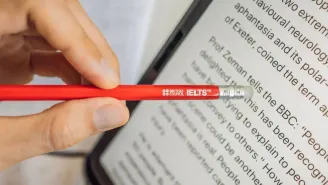Tidal Power Reading Passage
Tidal Power Reading Passage
Paragraph 1
Undersea turbines that generate electricity from waves are becoming a major source of renewable energy for Britain. It is still too early to anticipate the extent of the consequence they may have, but there are all indications that they may play an important role in the future.
Operating according to the same principle as wind turbines, the force of sea turbines comes from wave currents, which turn blades like propellers on ships, but unlike wind, the waves are predictable, and the power input is stable. The technology increases the possibility of Britain becoming self-sufficient in renewable energy and drastically lowers its carbon dioxide emissions. If tidal, wind, and tidal power all grow Britain will be able to close gas, coal, and nuclear power plants and export renewable energy to other parts of Europe. Unlike wind power, which Britain first created and then quit 20 years later, letting the Dutch turn it into a large industry, submarine turbines could generate large export revenue for island nations like Japan and New Zealand.
Paragraph 2
Tidal bases have already been determined to will deliver one-sixth or more of the UK's energy and reduce the cost of competing with current gas turbines and the already dilapidated nuclear industry. One site alone, Pentland Firth, between Orkney and Scotland's mainland, could generate 10% of the country's electricity from the shores of submarine turbines and three times more than the 1,200 megawatts at Britain's biggest and unknown nuclear power plant on the Channel Islands, Alderney. Sizewell B, in Suffolk. Further sites identified contain the Bristol Canal and the west coast of Scotland, especially between Campbelltown and Northern Ireland.
Paragraph 3
Work on the plans for the latest turbine blades and bases is well underway at the University of Southampton's Sustainable Energy Research Committee. The first station is desired to be set up soon in Lynmouth, Devon, to test the technology in an effort to co-finance trade and industry and the EU. Abubakr Bahaj, who is the head of the Southampton study, says the potential for energy from tidal currents is much better than from wind because water flows are predictable and stable. Technology for dealing with seawater-hostile salinity was formed in the North Sea oil industry and is already known for turbine blade design due to wind and ship propulsion. There are some technical issues, but I hope that in the next five to ten years, we will establish commercial sea turbine farms. Southampton was awarded £215,000 over three years to build the turbines and is functioning with IT power subsidiary Marine Current Turbines on the Lynmouth project. EU research has now determined possible sites for 106 wave power, with 80% located around the UK coast. The finest sites are between islands or about more inland beaches where there are powerful tidal currents.
Paragraph 4
A sea turbine blade should be only one-third the size of a wind turbine generator to deliver thrice as much power. The blades are about 20 meters in diameter, so about 30 meters of water is needed. Unlike wind energy, environmental resistance is unlikely. Fish and other creatures are thought to be less likely to be endangered by relatively slow-moving blades. Each turbine will be placed on a tower, which will be connected to the national power supply grid through undersea cables. The towers are designed to stick out of the water and burn alert shipping, take it out of the water for maintenance, and clean the sponge from blades.
Paragraph 5
Dr. Bahaj has accomplished a lot of work on the Alderney site, where there are strong currents. The single-submarine turbine farm will create more power than the Channel Islands need, and most will be injected into the French grid and re-imported to Britain through cable under the channel.
Paragraph 6
Technical difficulty is cavitation, where low pressure causes air bubbles behind the turning plate. These can generate vibrations and damage the blades of the turbines. Dr Bahaj stated, "We need to sample several blade types to prevent this from occurring or at least make sure it does not harm the turbines or lower performance." One more minor problem is the submerged waste floating on the blades. So far, we couldn’t got to know the level of consequence it might be. The turbines need to be made stronger because the sea is a hostile environment, but all indications are good that it can be done.
Tidal Power Reading Question & Answers
Discover exciting and informative IELTS reading answers about Tidal Power






